Introduction to the Teleferico
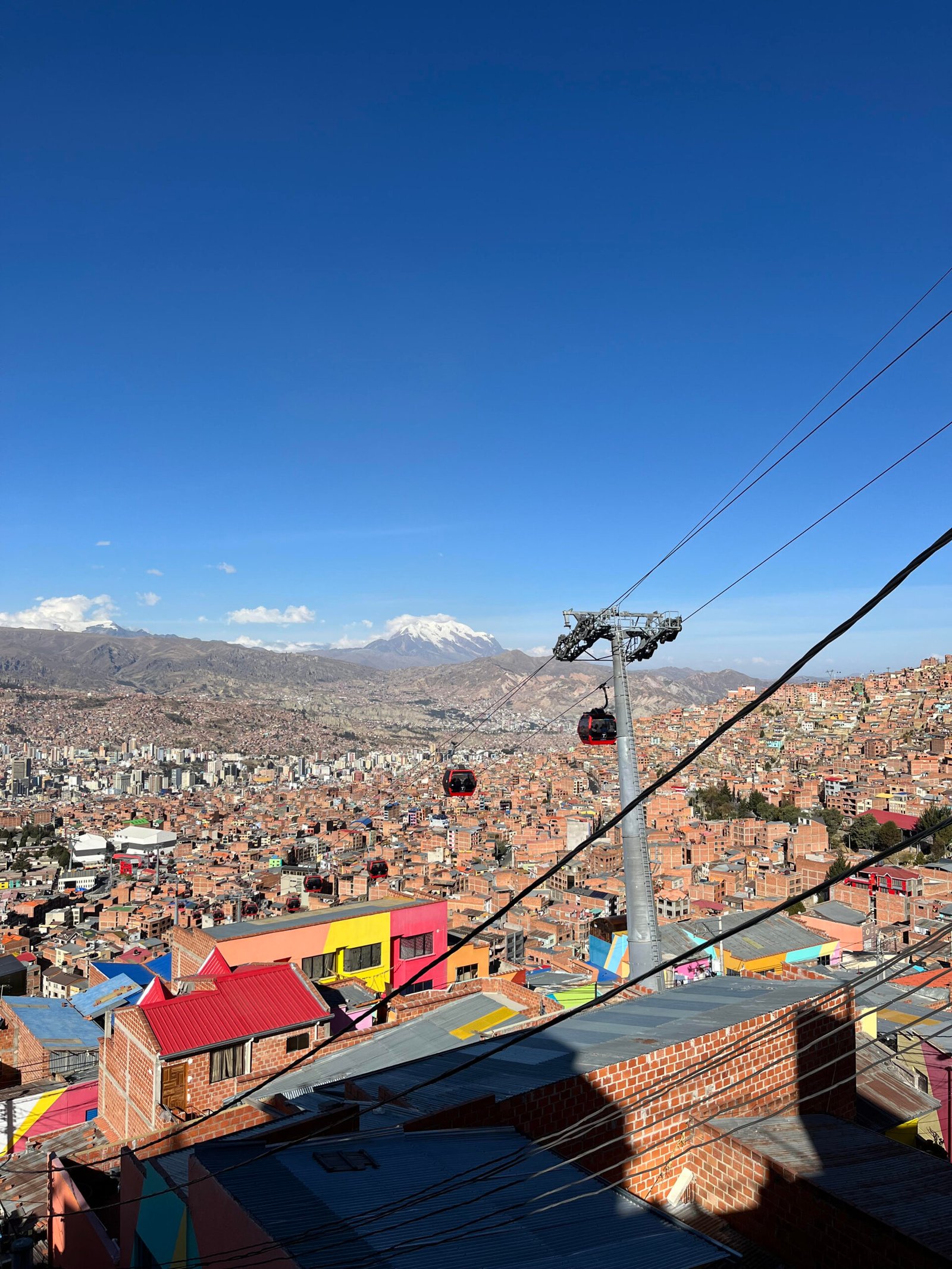
The Teleferico, also known as the cable car system, is an innovative and integral part of La Paz’s transport infrastructure. Opened in 2014, it has quickly become an icon of the city, serving both the local population and tourists alike. This aerial transportation system is notable for its ability to navigate the steep topography of La Paz, which is situated at high altitudes and characterized by steep terrain. With multiple lines connecting various neighborhoods, it not only provides a scenic and sensational views of the city but also proves to be an efficient mode of transport.
One of the primary advantages of the Teleferico is its role in alleviating traffic congestion. La Paz faces significant challenges related to urban transport, including long commute times and overcrowded public transportation systems. The Teleferico offers a rapid alternative, avoiding the delays often encountered on the roads.
For residents, the Teleferico has transformed daily travel across the city. For those living in the higher districts, the cable cars provide easy access to essential services, educational institutions, and employment opportunities located in lower areas. Tourists can experience breathtaking views of La Paz’s unique landscape while traversing between key attractions.
History of the Teleferico
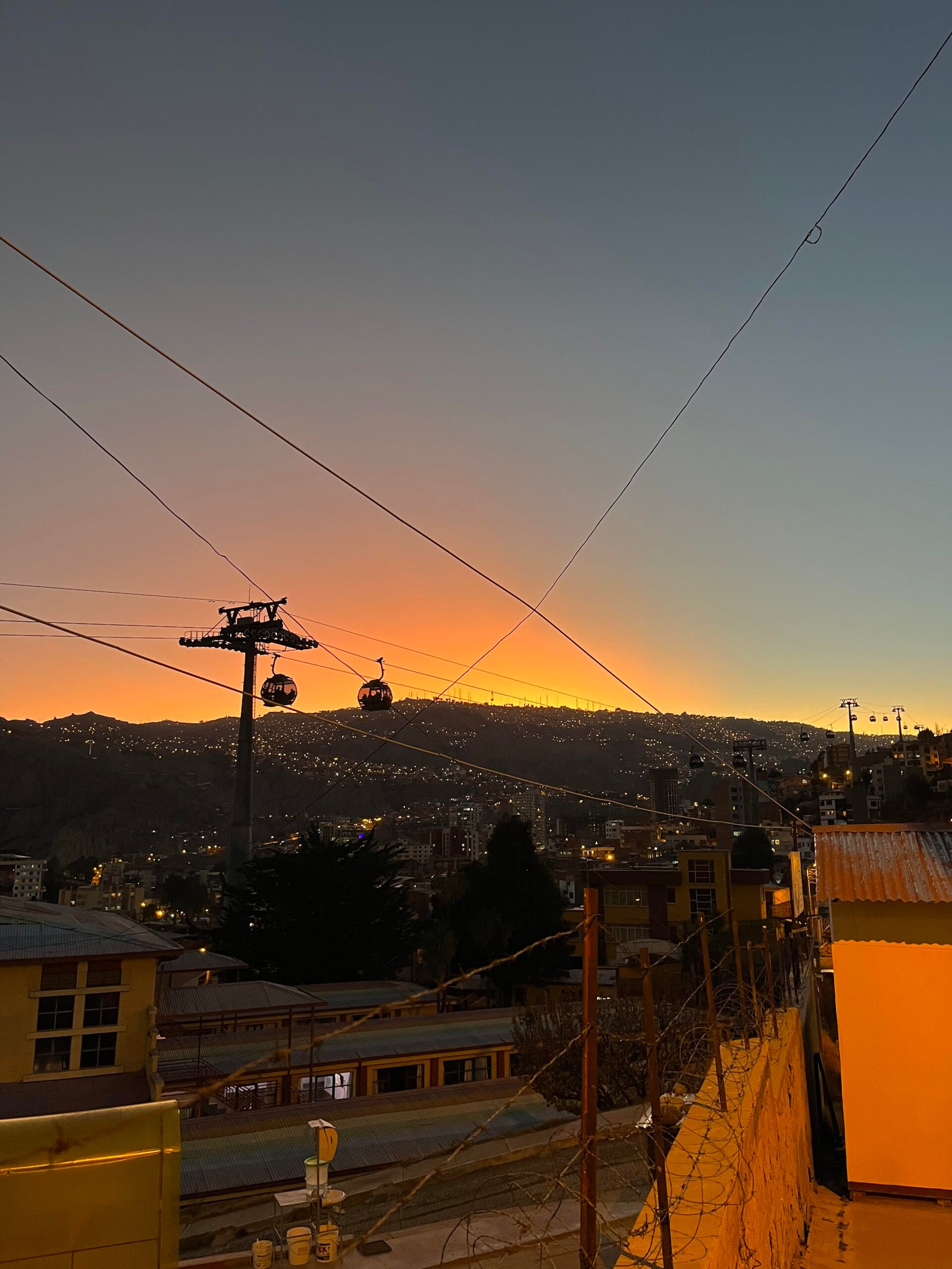
The Teleferico cable car system in La Paz, Bolivia, represents a significant advancement in urban transportation. It was born from the necessity to address the unique challenges posed by the city’s topography and density. La Paz, sprawled across steep hills and characterized by high altitude, faced severe transportation issues that impacted the daily lives of its residents. The conception of the Teleferico was a response to these challenges, providing a viable alternative to the congested roadways and limited public transport options.
Construction of the Teleferico began in 2012, with the inaugural line, the Red Line, officially opened in May 2014. This line connected El Alto, to several crucial urban areas, thereby making travel significantly easier and more efficient. As the first urban cable car system in the world, it showcased the potential of cable cars as an efficient means of transport in cities facing geographical constraints.
Subsequent lines were developed rapidly to expand the network, with the Green and Yellow lines joining the system shortly after the initial opening. Each subsequent expansion was meticulously planned, focusing on connecting neighborhoods and reducing travel times throughout the city. The Teleferico has not only improved access but also provided a stunning aerial view of La Paz, enriching the travel experience for both residents and tourists.
Overview of the Stations
The Teleférico cable car system in La Paz, Bolivia, is a complex and expansive transport network composed of several stations strategically located across the city. Each line serves a specific area, providing efficient transport options for residents and visitors alike. The system comprises multiple lines, with each line offering various stations that facilitate connectivity between different parts of the city.
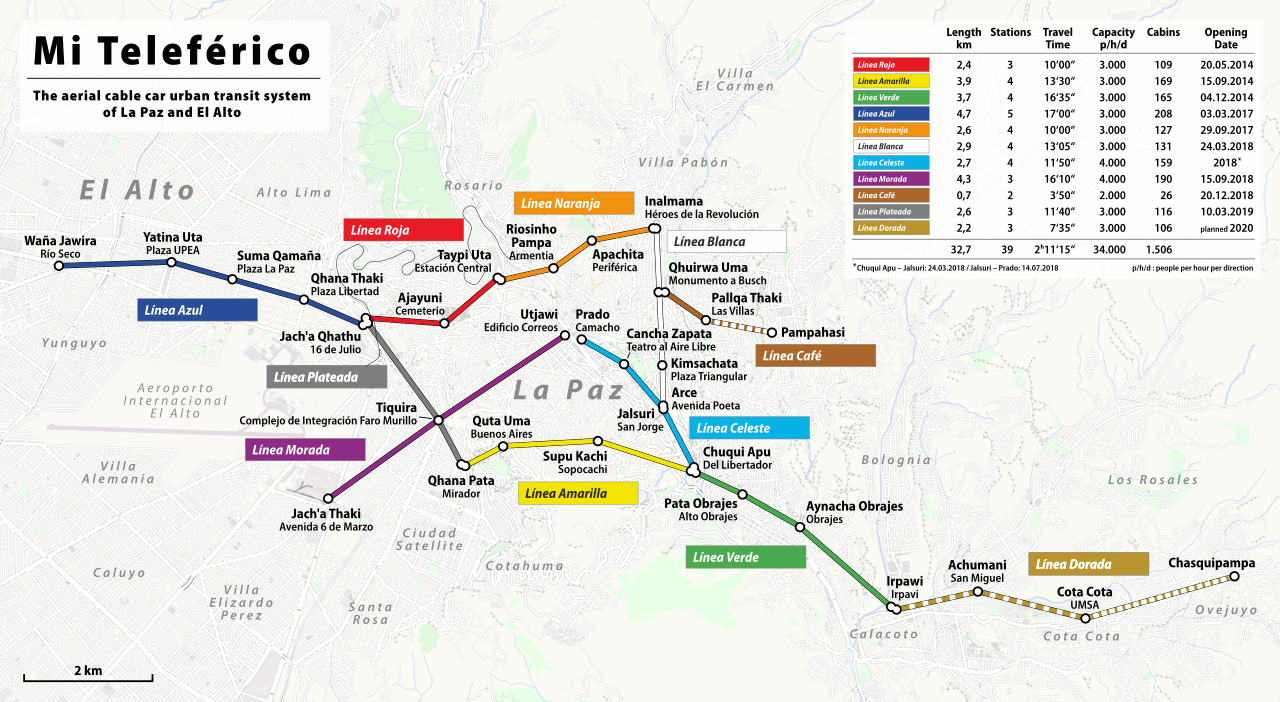
Red Line (Linea Roja)
Connects El Alto and the Central part of La Paz. Between stations 16 de Julio and Central Station. An important line as it connects El Alto to important transport options within and out of La Paz. This includes the Bus Terminal and various local minibuses. The Red line also passes by the General Cemetary of La Paz. A station is also available here to exit the Teleferico.
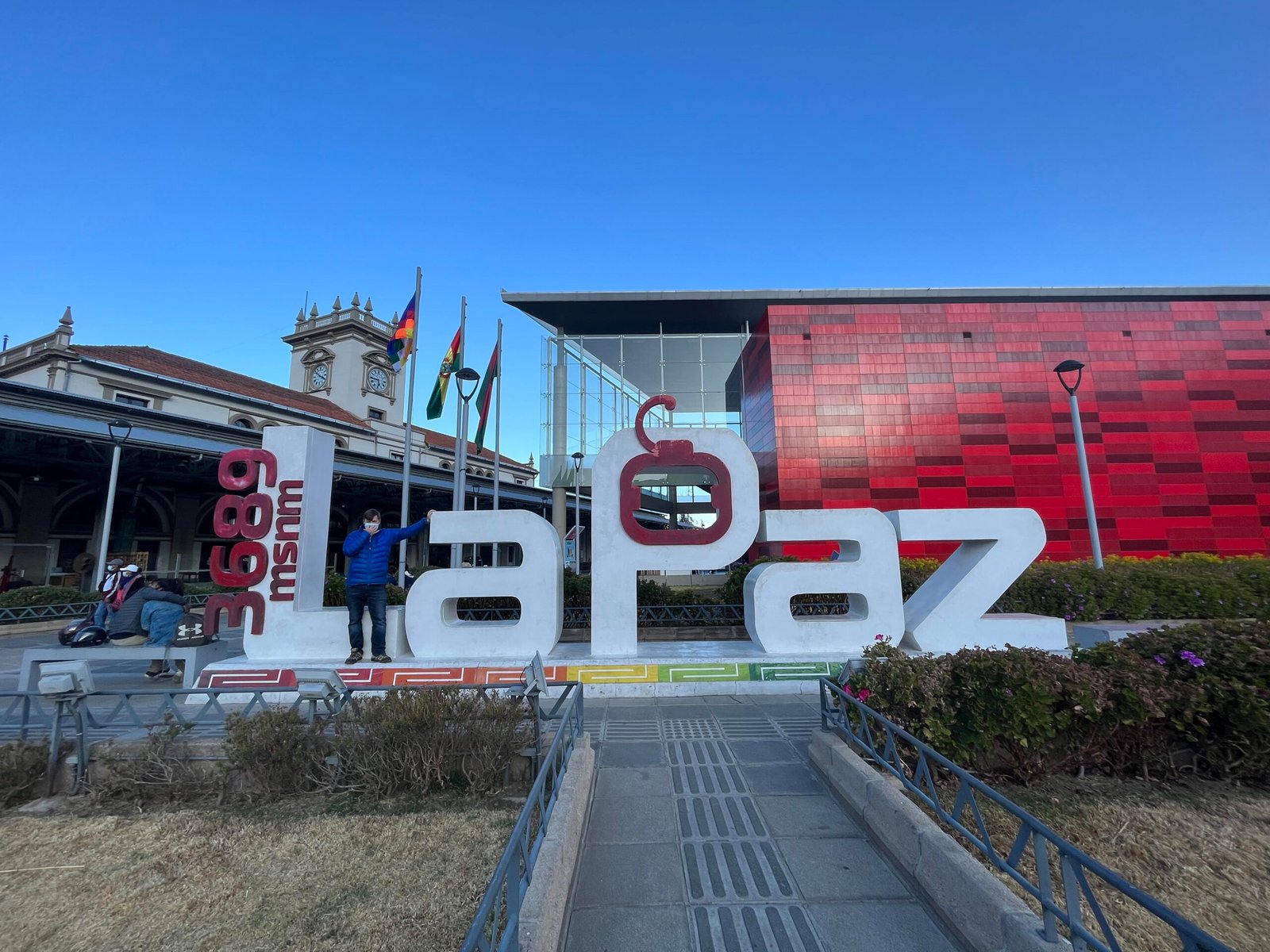
Purple Line (Linea Morada)
Another link between the Central district of La Paz and El Alto. Starts at San Jose station with 2 stations in El Alto, Faro Murillo (connects to the silver line) and 6 de Marzo.
Light Blue Line (Linea Celeste)
Links El Prado area (close to the Purple line Station “San Jose”) to Del Liberator. Connects to the Yellow for travel to Sopocachi and El Alto, and the Green line for travel further South to Obrajes and Calacoto.
Green Line (Linea Verde)
Links Del Liberator station to Irpavi station in the Southern part of La Paz, in particular Calacoto. This is the modern part of La Paz with many top-quality restaurants such as Gustu.
Yellow Line (Linea Amarillo)
Meanwhile, the Yellow Line provides a connection from the southern regions such as Irpavi and Obrajes to Sopocachi and El Alto. Sensational views are available from ‘Mirador’ station in El Alto. Access to the El Alto markets is available by connecting to the Silver line.
Silver Line (Linea Plateada)
The Silver line provides a connection between ‘Mirador’ station at the end of the yellow line to the Purple, Red and Blue Lines. It offers sensational views of La Paz, El Alto and the surrounding mountainous landscapes. We would highly recommend taking this line as a tourist to experience the amazing scenery and insights into traditional Bolivian life it offers. Access to the El Alto markets is available at ’16 de Julio’ station at the end of the Silver Line.
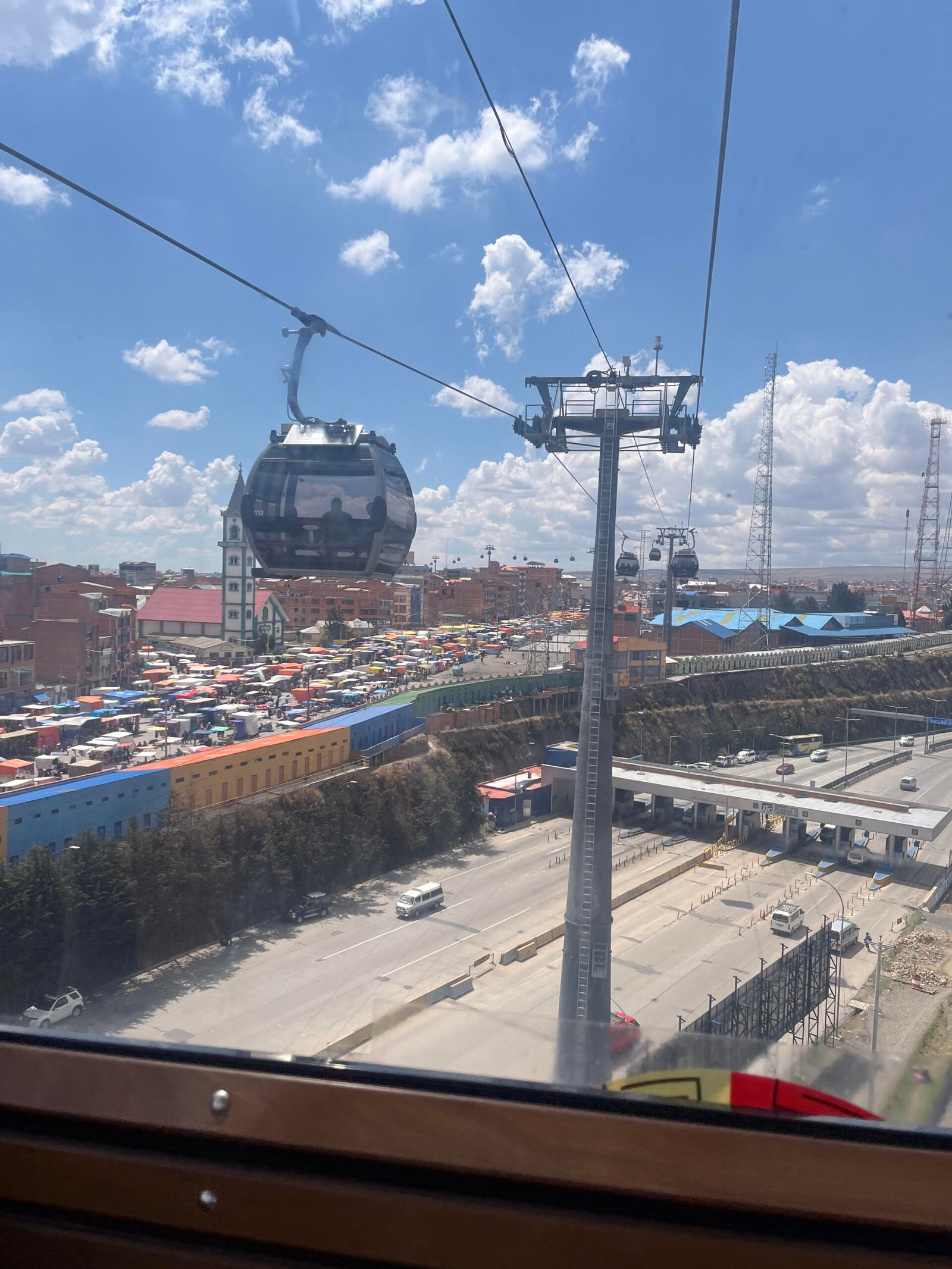
Blue Line (Linea Azul)
The Blue Line goes into the heart of the city of El Alto. Along this line you will encounter many beautiful traditional buildings known as ‘cholets’. They are colorful and are decorated with traditional Andean designs. The blue line also offers sensational views of El Alto the surrounding mountains of Illimani and Huayna Potosi.
Orange Line (Linea Naranja)
Connects from the Red Line at Central Station to the Heros of the Revolution station in Miraflores. Offers sensational views of the city.
White Line (Linea Blanca)
Connects between the Heros of the Revolution Station in Miraflores to Arce station in Sopocachi. Traveling along the White Line offers views of Hernando Siles Stadium and the Miraflores area. From Arce station a lift is available to head into Sopocachi. Here lies the Las Torres Mall and Multicine Shopping Mall offering food, cafes and a movie theatre. A connection to the Light Blue line is also available.
Hours of Operation
The Teleferico is open for service from 0630 until 2230 Monday to Saturday. On Sundays and public holidays, the Teleferico is open from 0700 until 2100. These times are applicable to all Teleferico lines. Be aware that at times unplanned maintenance may be required. Therefore, the Teleferico may be unavailable during the normal operating hours for certain periods of time. At times, strong winds can close Teleferico lines if it is deemed to be unsafe.
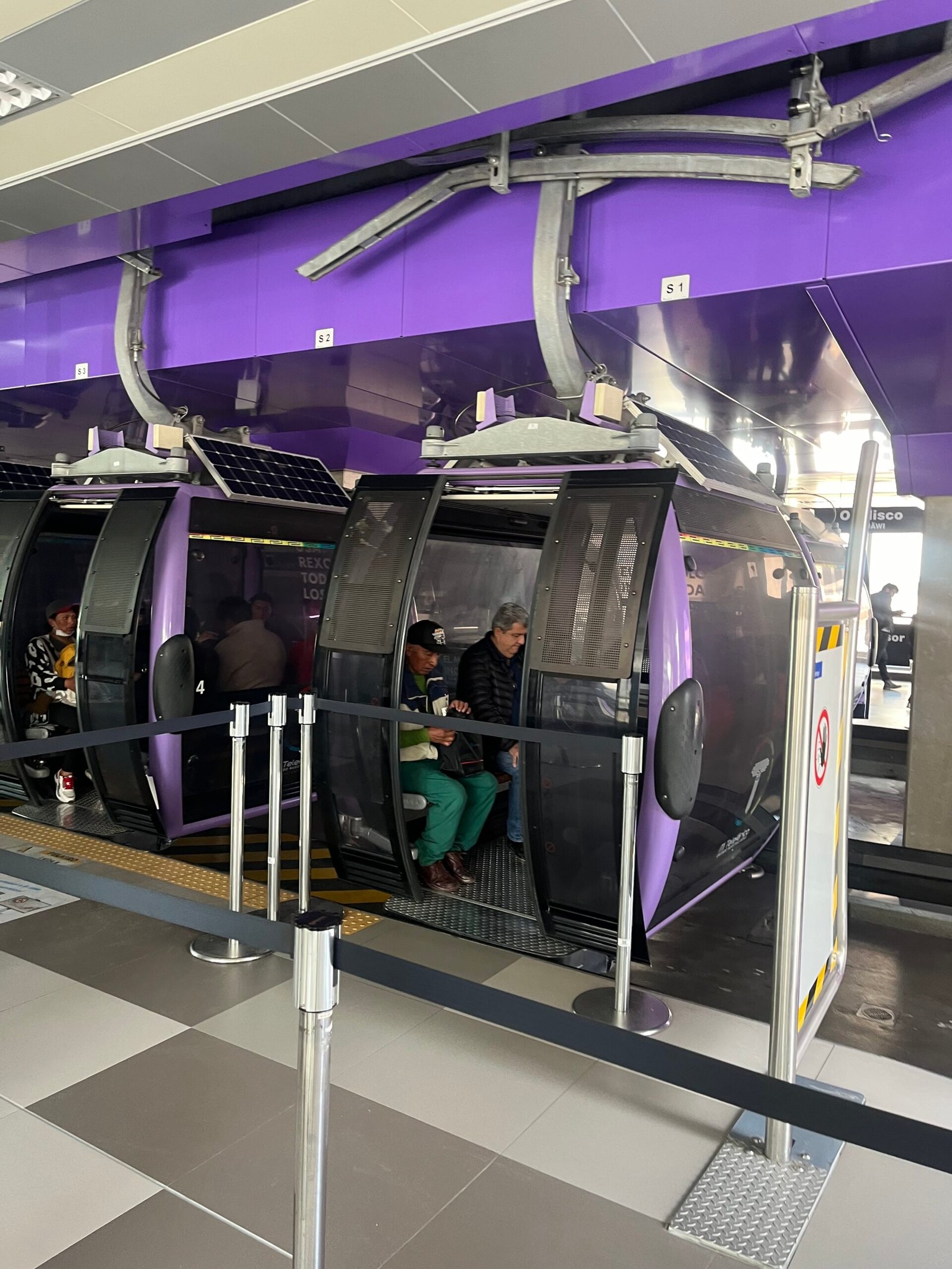
Cost of Riding the Teleferico
The Teleferico cable car system in La Paz provides an affordable and efficient mode of transportation. It allows residents and tourists alike to travel across the city and into El Alto. Standard ticket prices for a single journey range from 3 to 5 Bolivianos, depending on the specific route taken.
For those intending to utilize the Teleferico multiple times, the system offers an economical multi-ride pass option. These passes allow users to purchase tickets in bulk, often at a reduced rate compared to single-ride fares. This is especially beneficial for tourists who plan to explore various routes throughout their visit.
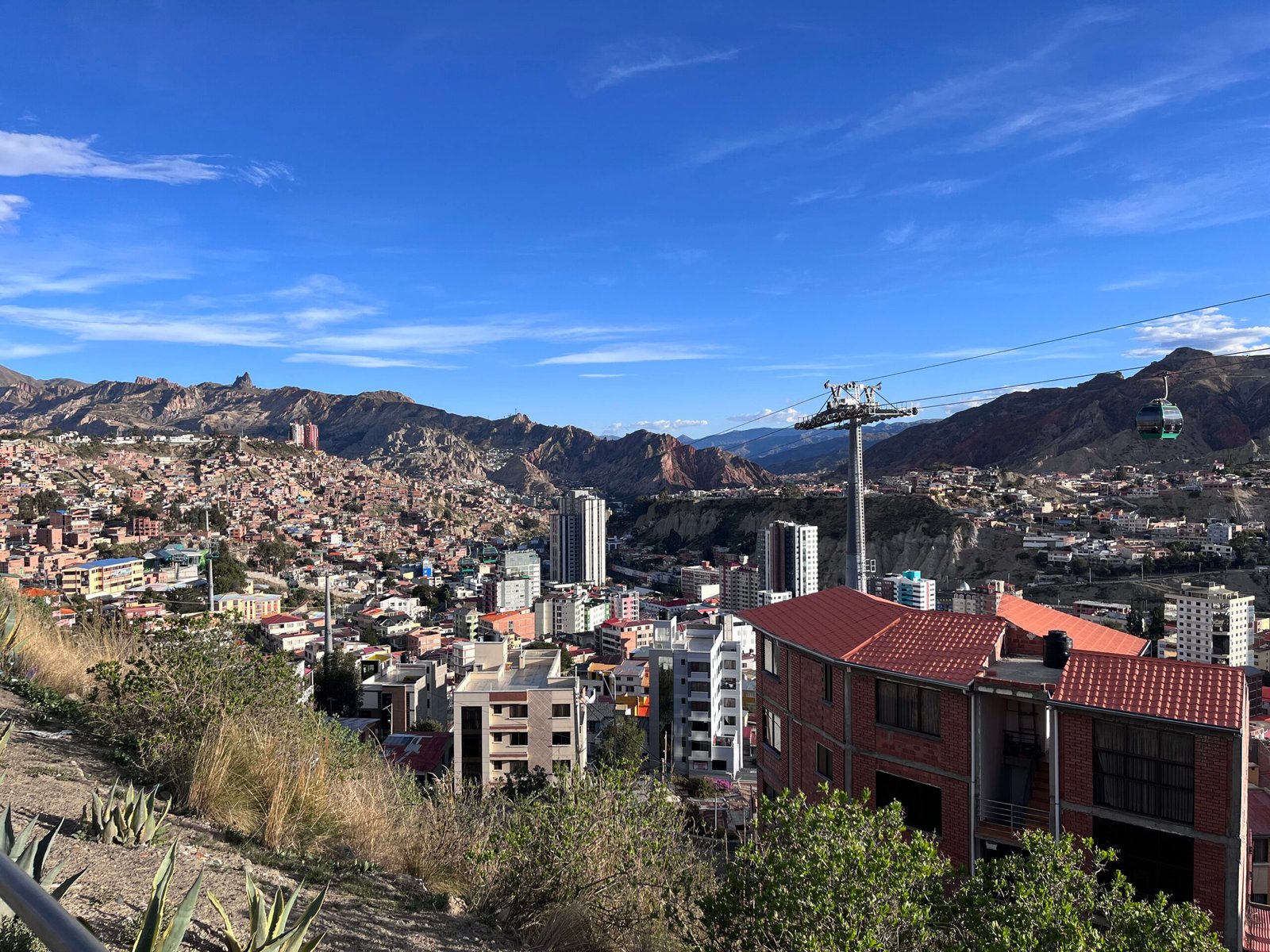
Destinations and Sensational Views Accessible via the Teleferico
The Teleferico is a gateway to many interesting destinations and sensational views within La Paz and El Alto. They include:
- Central Station, La Paz Bus Station, Miraflores
- El Alto, 16 de Julio El Alto Markets, El Alto “cholets’ buildings, Cholita Wrestling
- Sopocachi district, Multicine and Las Torres shopping malls.
- Calacoto, Megacenter La Paz, Valle de la Luna, Valle de las Animas, Devils Tooth
From the above it is clear that the Teleferico offers a way to travel to some of La Paz’s best attractions. We would also recommend using the Teleferico system purely as a sightseeing tool as it offers superb views of La Paz. Just hop on at the closest station to you and do a loop of the network as desired! It’s cheap, efficient, useful and clean. The Teleferico is a popular transport system with locals and tourists alike. It’s the best thing about La Paz.
In conclusion, the Teleferico cable car system has played a pivotal role in transforming urban mobility in La Paz. Its environmental benefits, contributions to tourism, and positive impact on the residents’ quality of life truly make it an essential feature of the city. A ride on the Teleferico is not merely a trip. It’s an opportunity to engage with the culture and sensational landscape of La Paz like never before. Visitors and locals alike are encouraged to experience this standout mode of transport and appreciate all it has to offer. We strongly recommend that you make full use of it in your Bolivian travel experience!

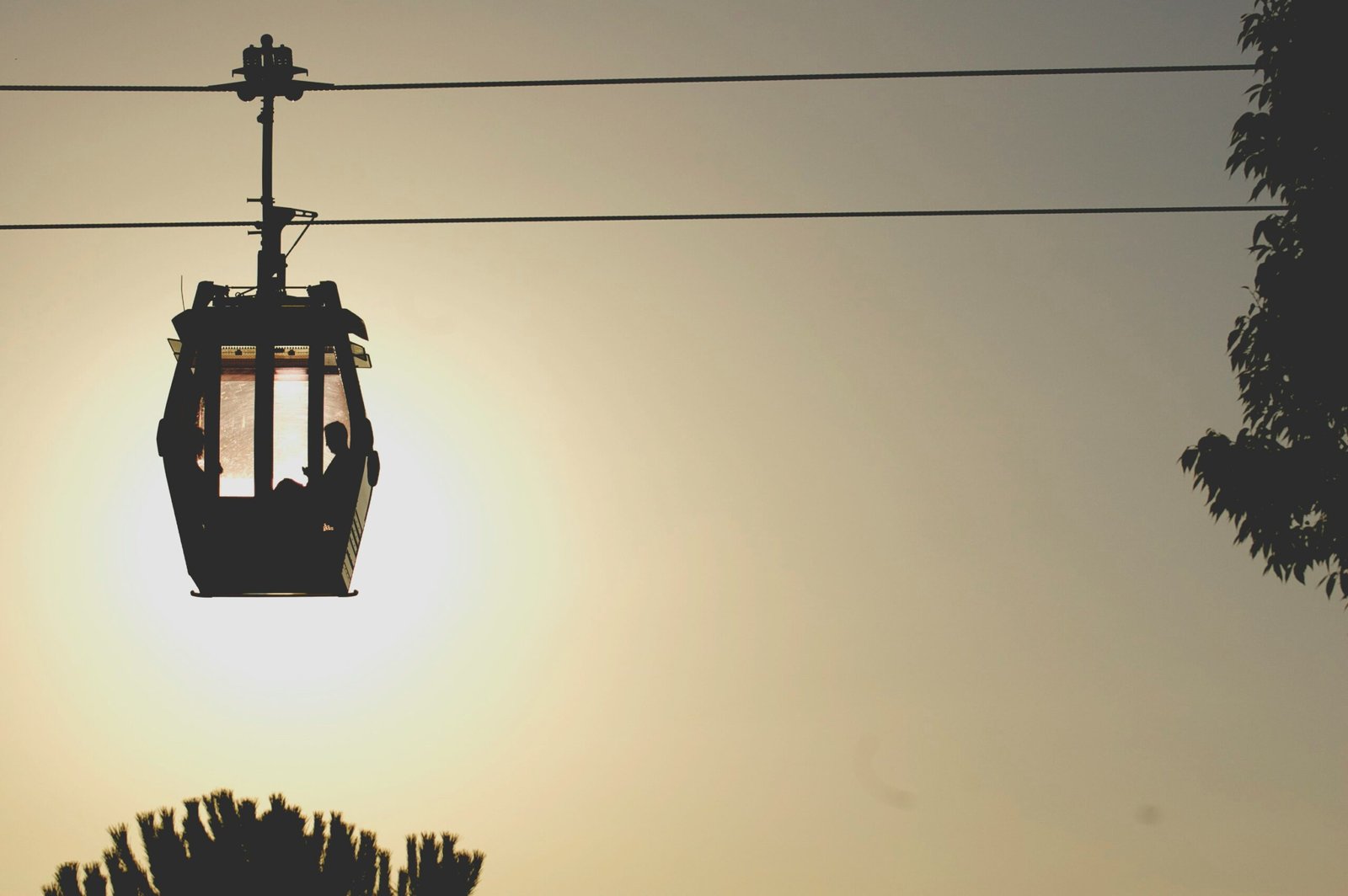
No responses yet